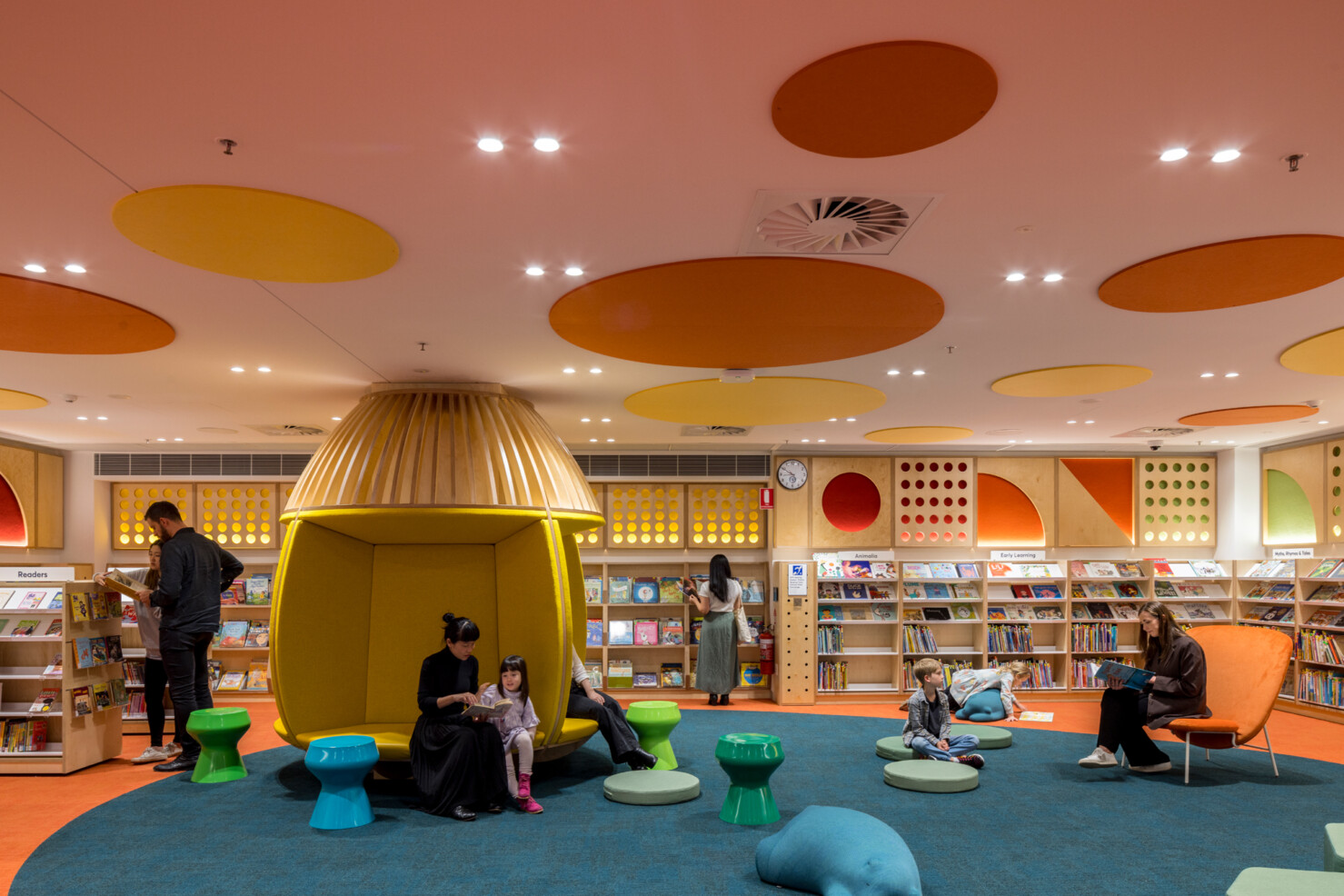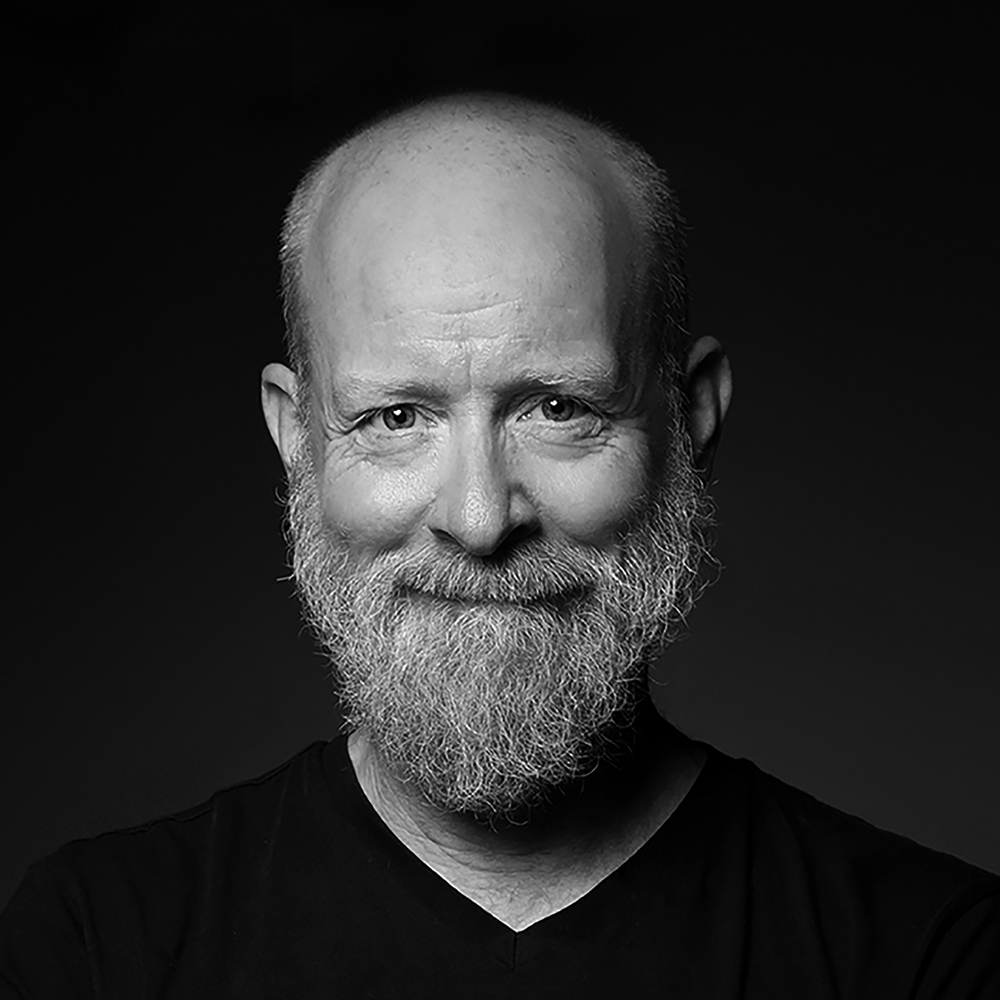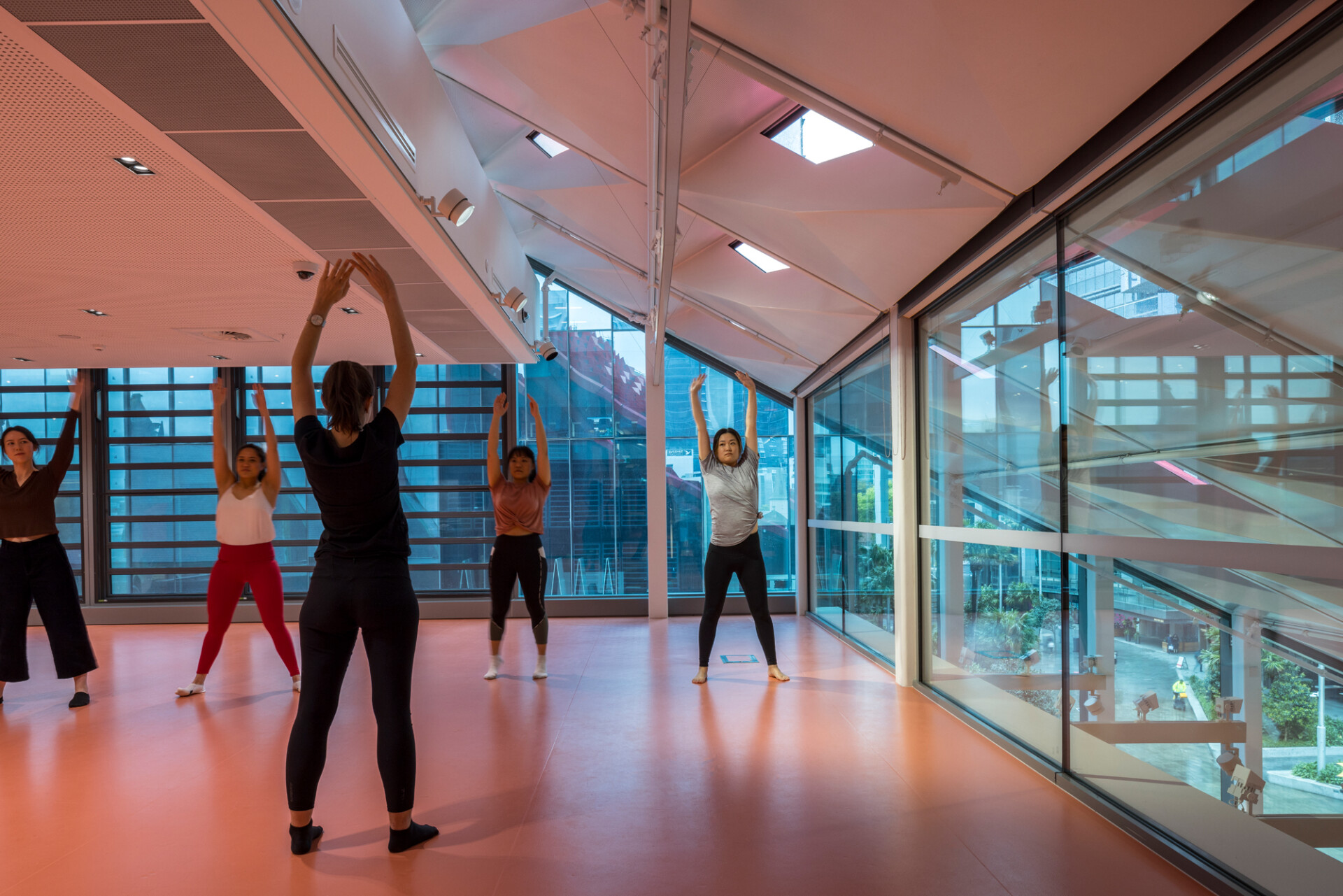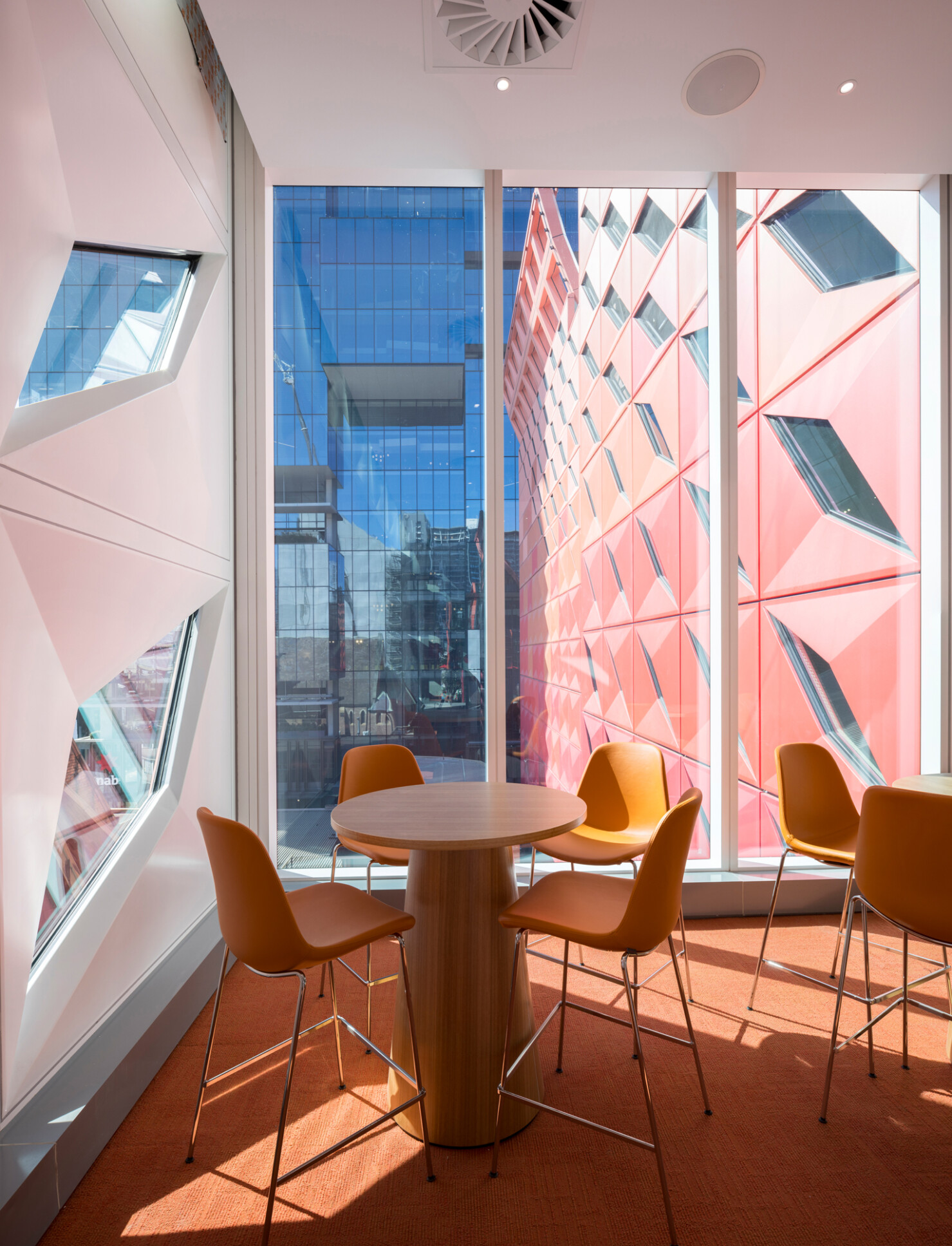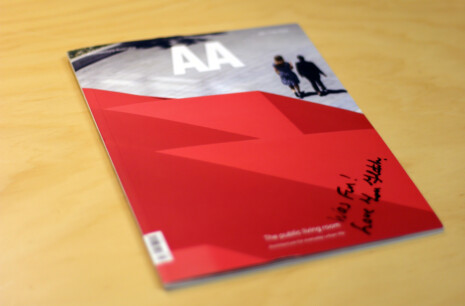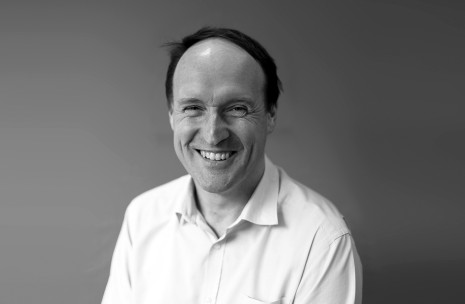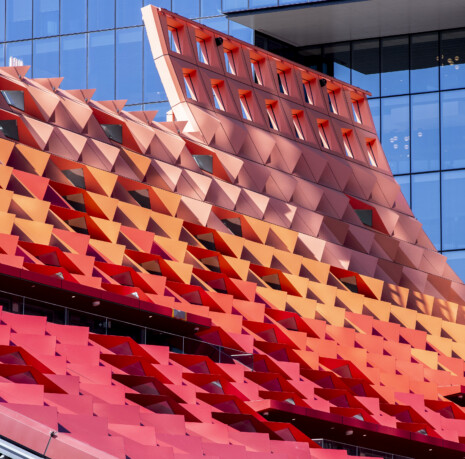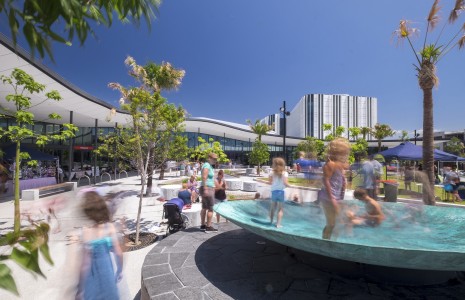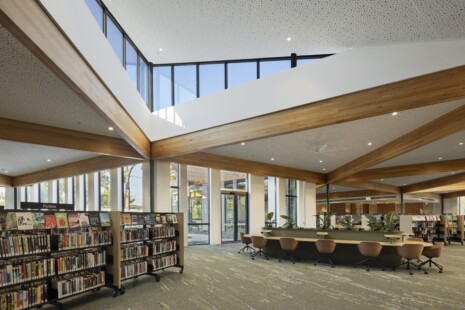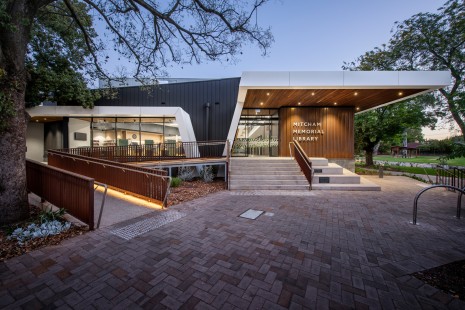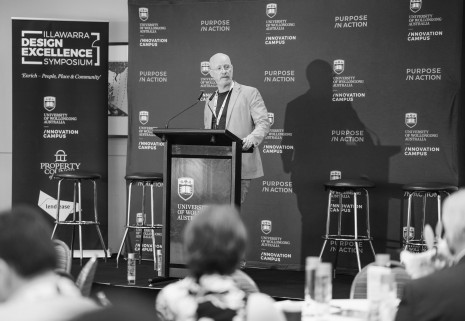PHIVE—In Conversation with Richard Does
PHIVE is a new landmark public building in Parramatta. We talked with Richard Does—who lead the DesignInc team from competition stage in 2016 right through to project completion in 2022—about the design concept, the process, the challenges and delightful moments along the way.
Thanks for meeting today to talk about PHIVE Richard. Can you tell me how the project began?
The project started as an EOI then a design competition in 2016. One of our other big projects, Shellharbour Civic Hub, had just been completed, and was starting to win quite a few awards. We had collaborated with Lacoste + Stevenson on Shellharbour, so we decided to team up again and submit an EOI for the new 5 Parramatta Square project, as it was also a large community hub. We also knew that the client was after an international architect, so Thierry Lacoste—who is French—approached Manuelle Gautrand, who agreed to be part of the team.
We submitted an EOI, then were shortlisted as one of five teams in a paid design competition, which we won! It was very exciting.
And what were the key elements in the design at that early stage?
Other than providing a state-of-the-art civic building which delivered much needed community space, there were five key elements of the architectural vision which contribute to the urban design of the new Parramatta Square:
- To create a spire— As the key civic building surrounded by predominantly commercial towers in the Parramatta town centre, we thought it was important that the building have a sense of prominence. The spire reaches to the sky, like a church, historically the building typology representing the civic heart of a town square.
- To engage with the old Town Hall—Connectivity to the existing small Parramatta Town Hall was important, so we designed part of the new building to hover over it, enveloping and holding it.
- To engage with the square through active balconies— Engaging with the town square was also important, so we designed large balconies opening onto the square for both small activities and large-scale functions.
- To cantilever into the square—Again, the relationship with the square was carefully considered. We cantilevered the first storey of the building into the square, engaging physically with the public space and providing dry areas beneath to the main entrances.
- To celebrate the triangular building form—The building envelope was an unusual triangular shape dictated by minimising overshadowing of solar access, and height limits. Rather than trying to squeeze a regular building form into this shape we embraced the triangular form, and created a striking slightly curved cascade if roof and window units morphing up into the spire.
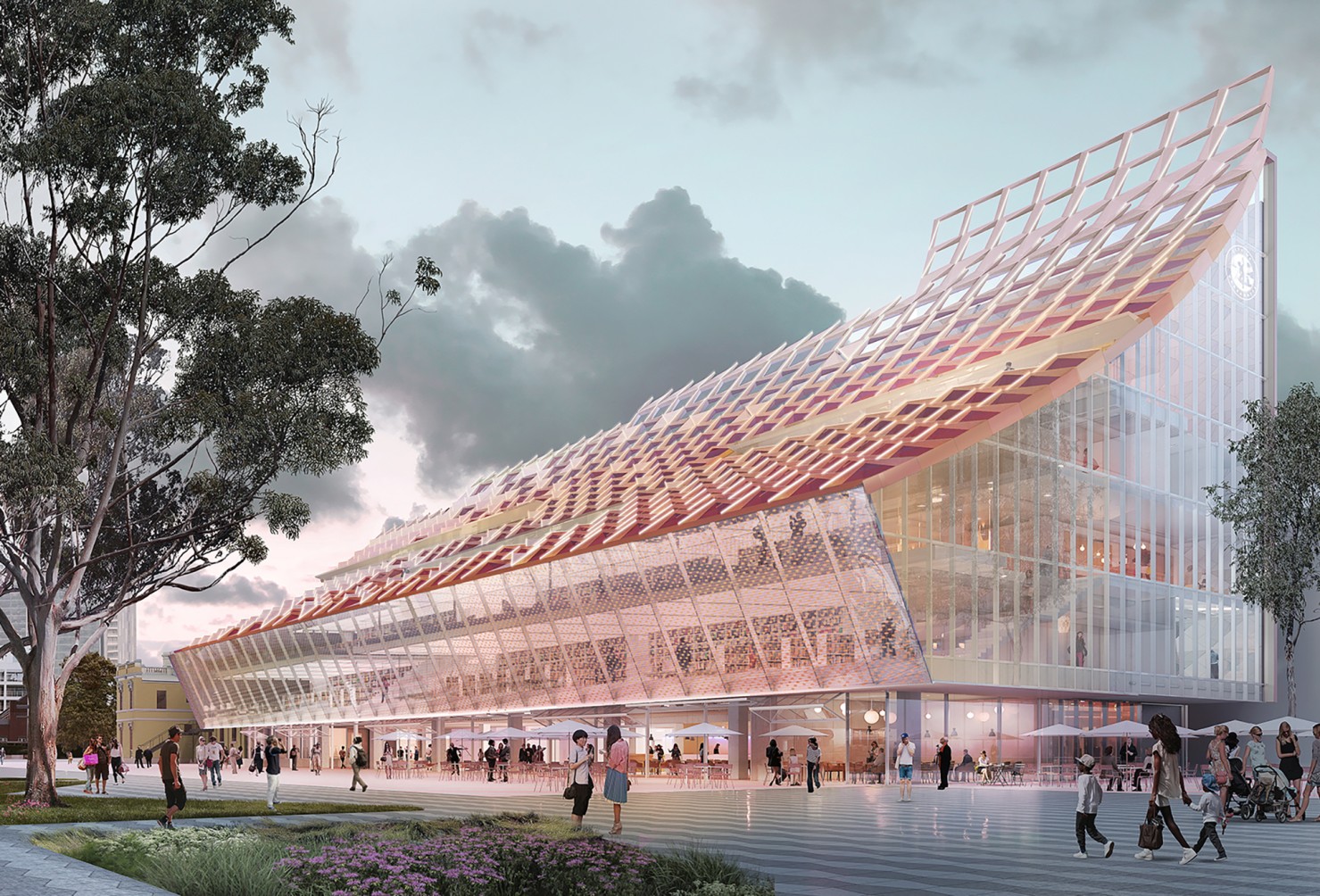
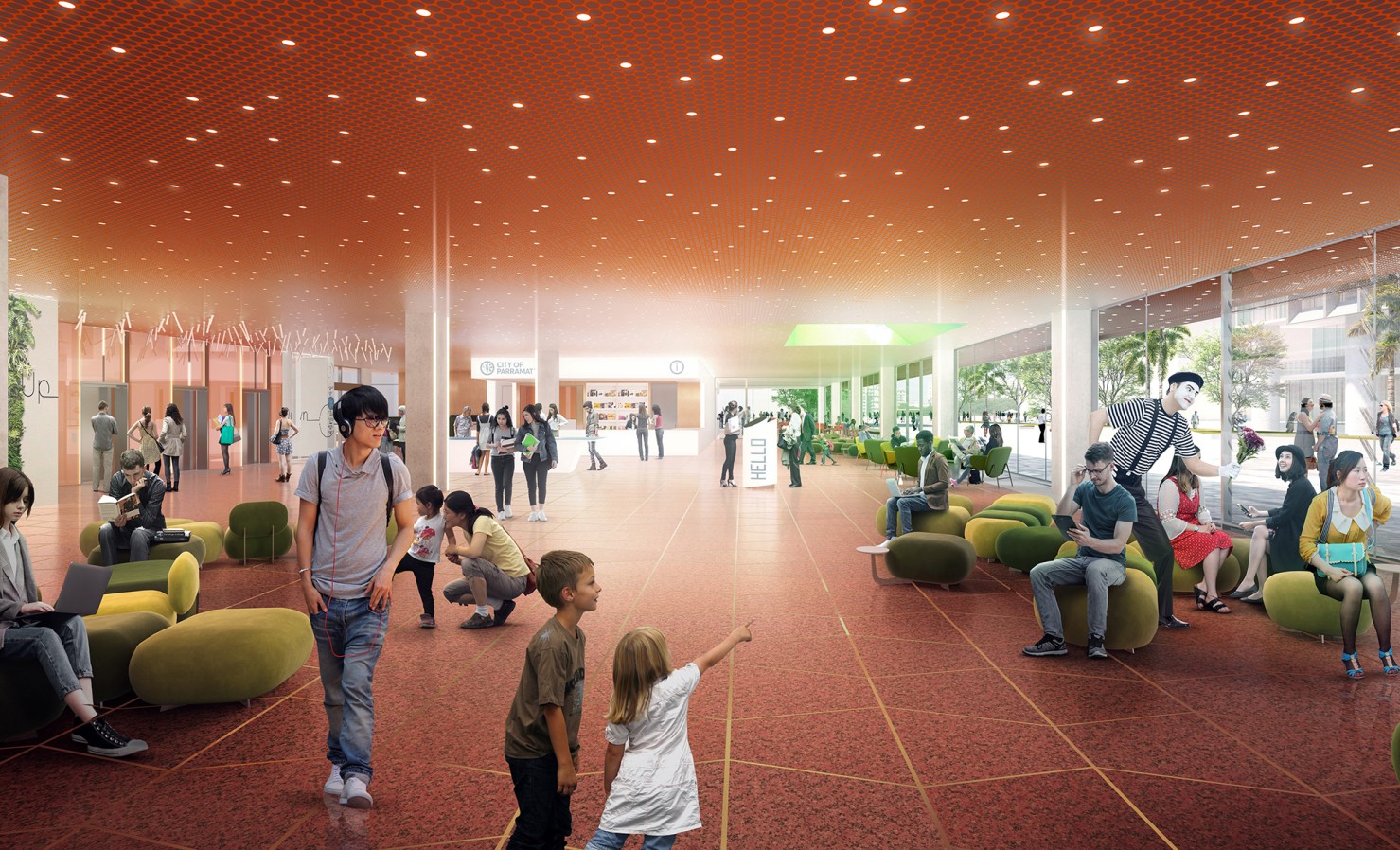
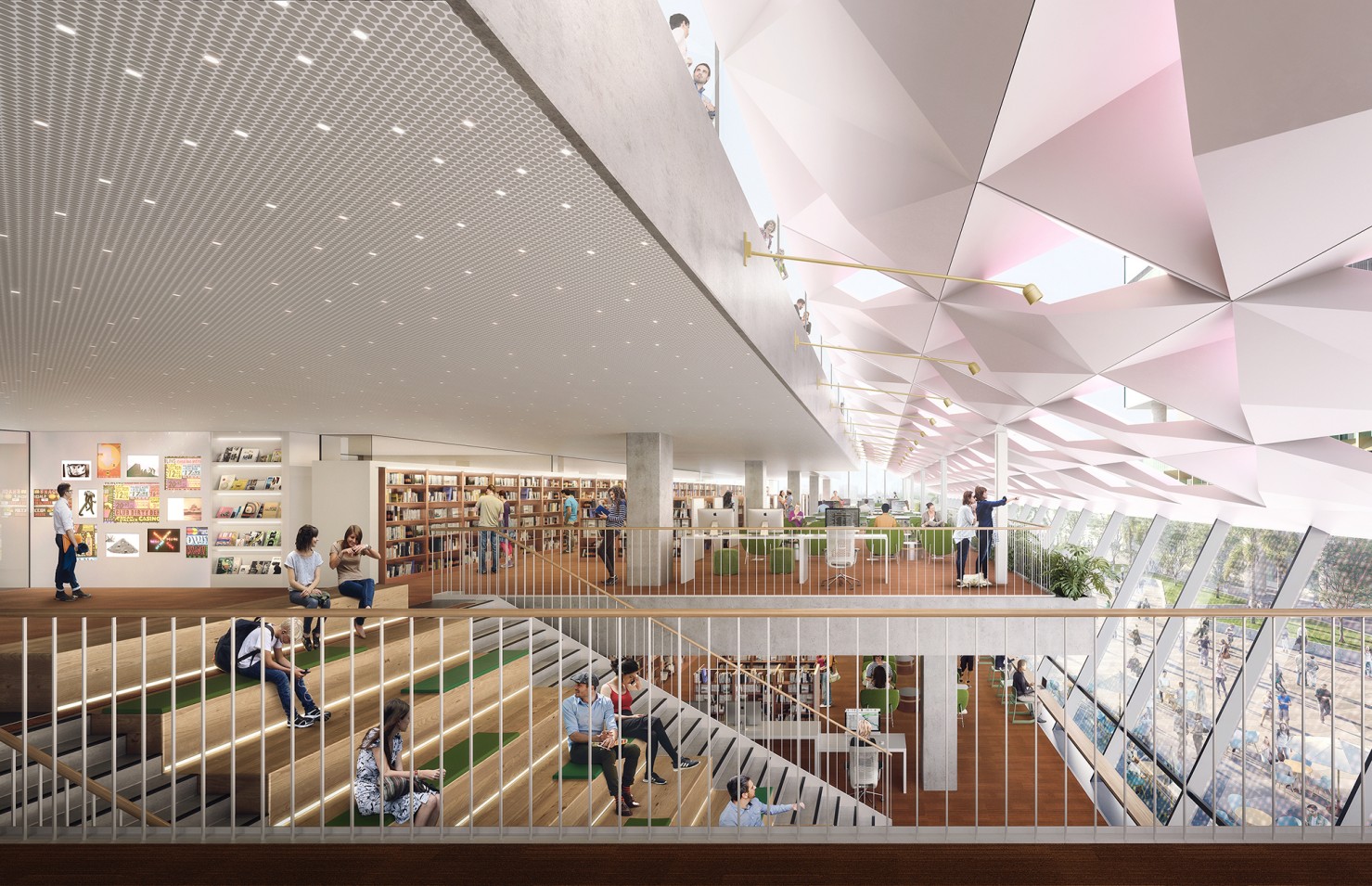
That’s so interesting. It seems like all of those elements remained true in the final design.
Yes, they did, but the result in comparison to the competition design’s appearance is a façade that truly responds to the local climate and culture.
Having three architecture firms working in collaboration sounds like a challenge. Can you tell me a bit about how this worked?
It was a truly collaborative process. Thierry (from Lacoste + Stevenson), Manuelle (from Manuelle Gautrand Architecture) and I (from DesignInc) made decisions together. If there was ever any doubt or difference of opinion about design, majority tended to rule, and of course the client—Parramatta City Council—would make the final decision trusting our directions.
Can you tell me about all of the levels and facilities in the building?
Ground Floor—This is the main entry from Parramatta Square. There is a large lobby, exhibition and gathering space with a digital artwork. It’s a welcoming and generous public space—groups assemble here for tours, with brochures and information on local destinations, a concierge, and a cafe which opens onto both the lobby and the square (currently under construction). There are visual and physical connections to other levels of building—a discrete glass panel in the floor looks into the expansive exhibition centre in the basement below, and an atrium space opens into the library above.
Basement—The ‘Discovery Centre’ is a double-height exhibition space in the basement. It has humidity-controlled displays to host travelling / temporary exhibitions and a large amphitheatre for small talks and learning. The inaugural show is an exhibition of artefacts from the vast Parramatta City Council heritage collection.
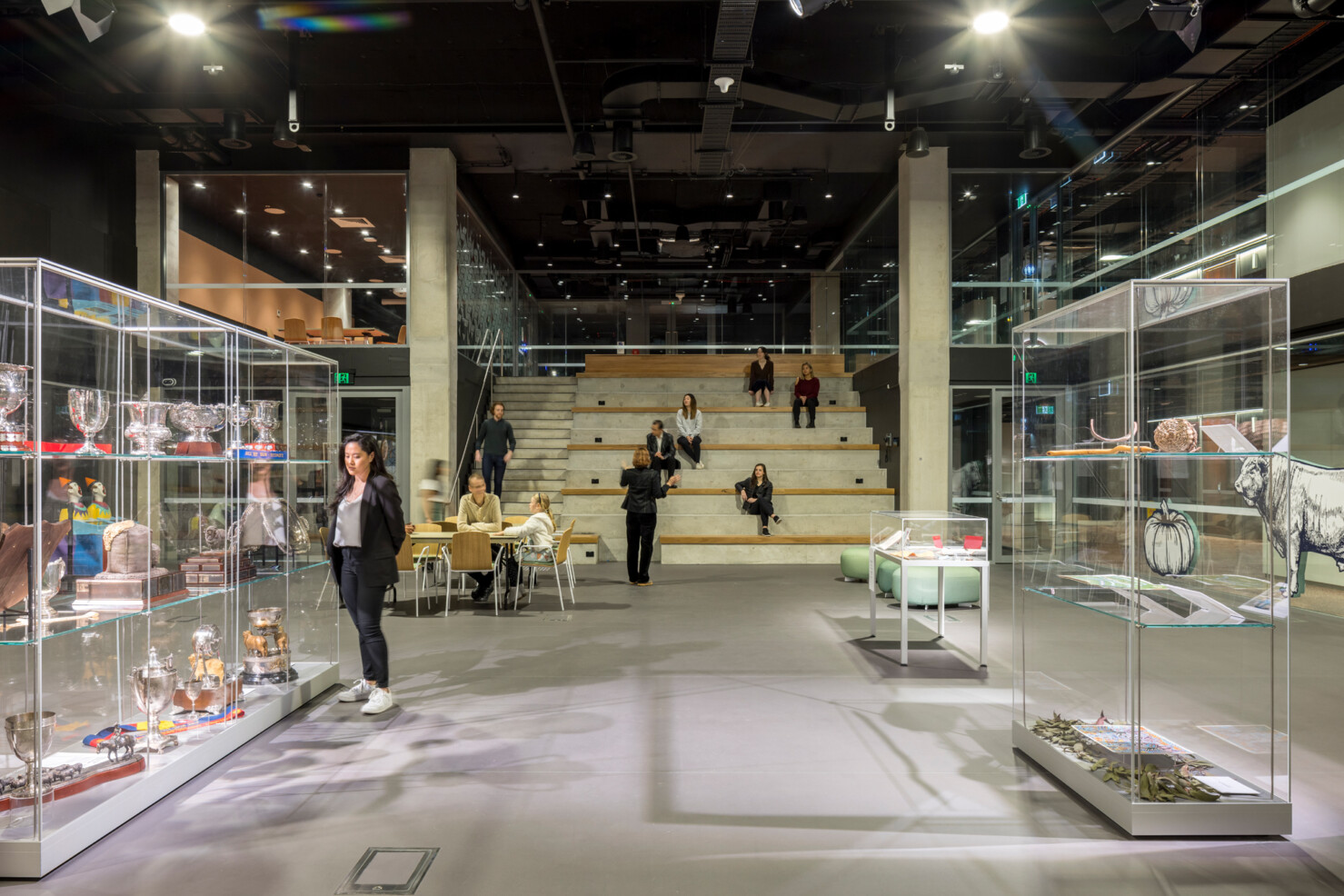
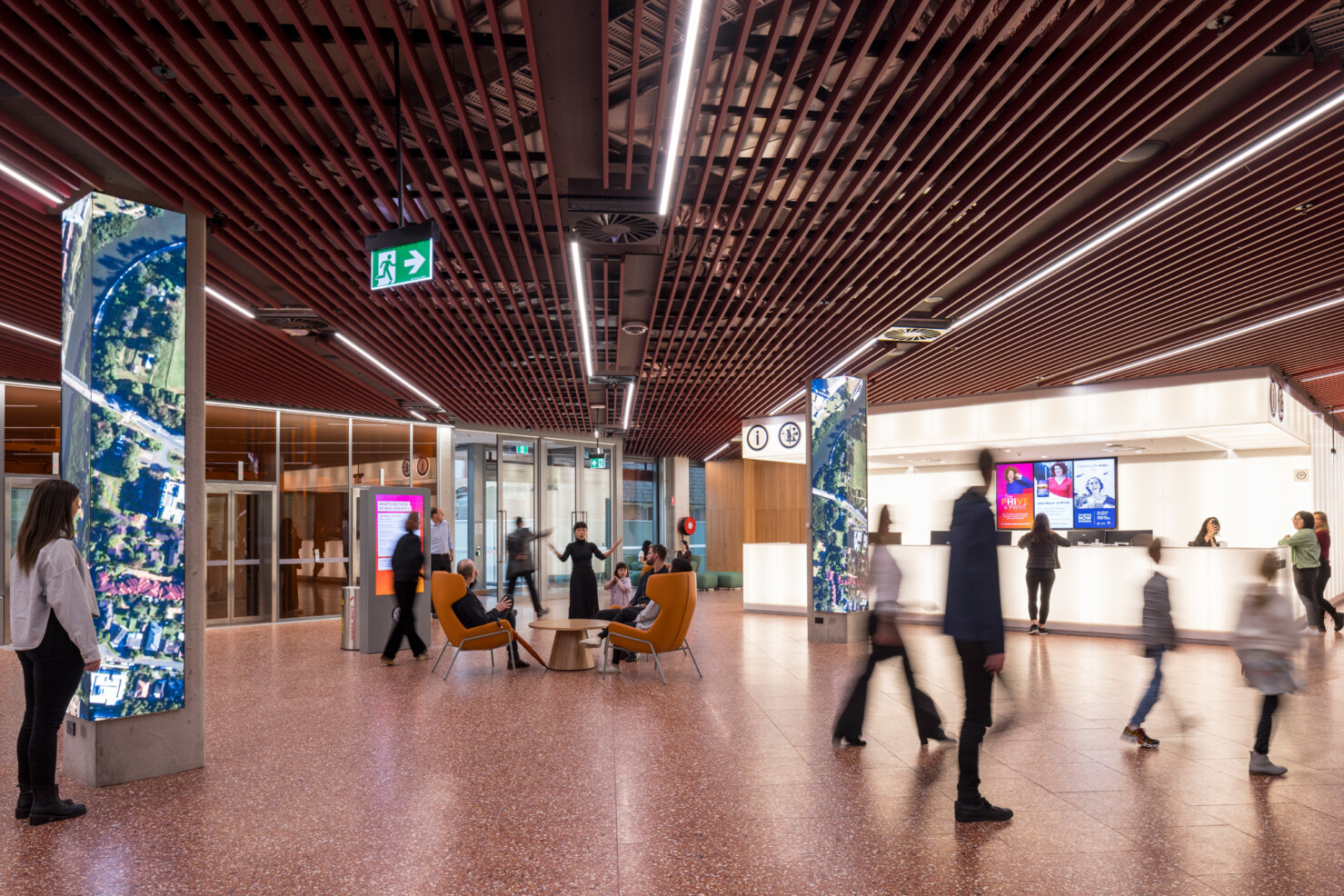
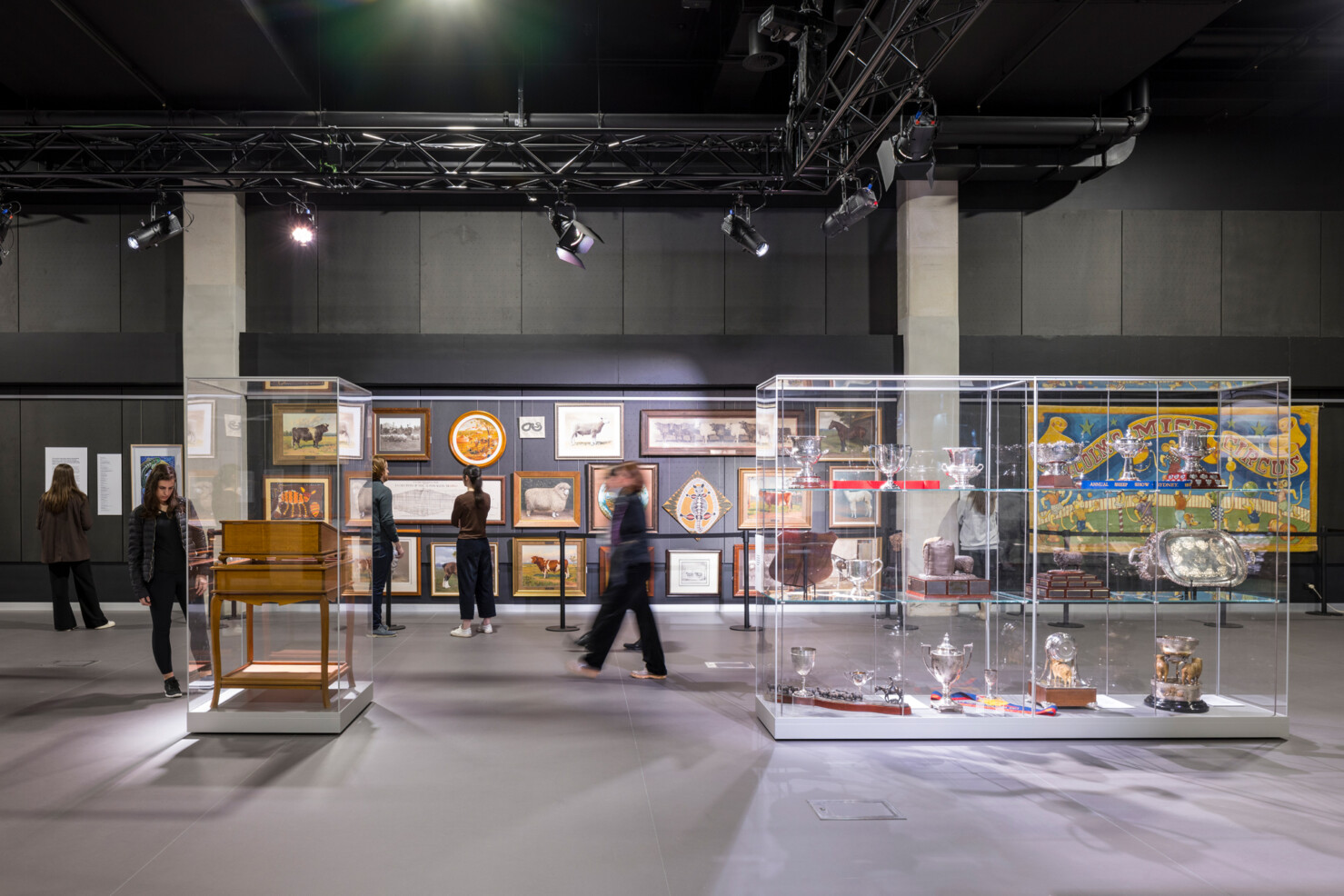
Levels 1 / 2—The library and administrative areas are in Levels one and two. This is where the library collection is—books, newspapers, and digital material, and zones for reading, researching and working. The space is fully digitally enabled, charging points and free wi-fi. There is a large quiet reading room and a children’s library area, both very popular.
A number of facilities for local First Nations communities are managed by the local Traditional Custodians, including a ‘Keeping Place’ and research laboratory which are humidity controlled for storing artefacts, and the ‘Dharug Room’, all of which are managed by the Dharug community. Members of the public can only enter on invitation and accompanied.
The Parramatta City Council heritage collection—which includes both Aboriginal and post-settlement artefacts—is also housed in rooms on these levels.
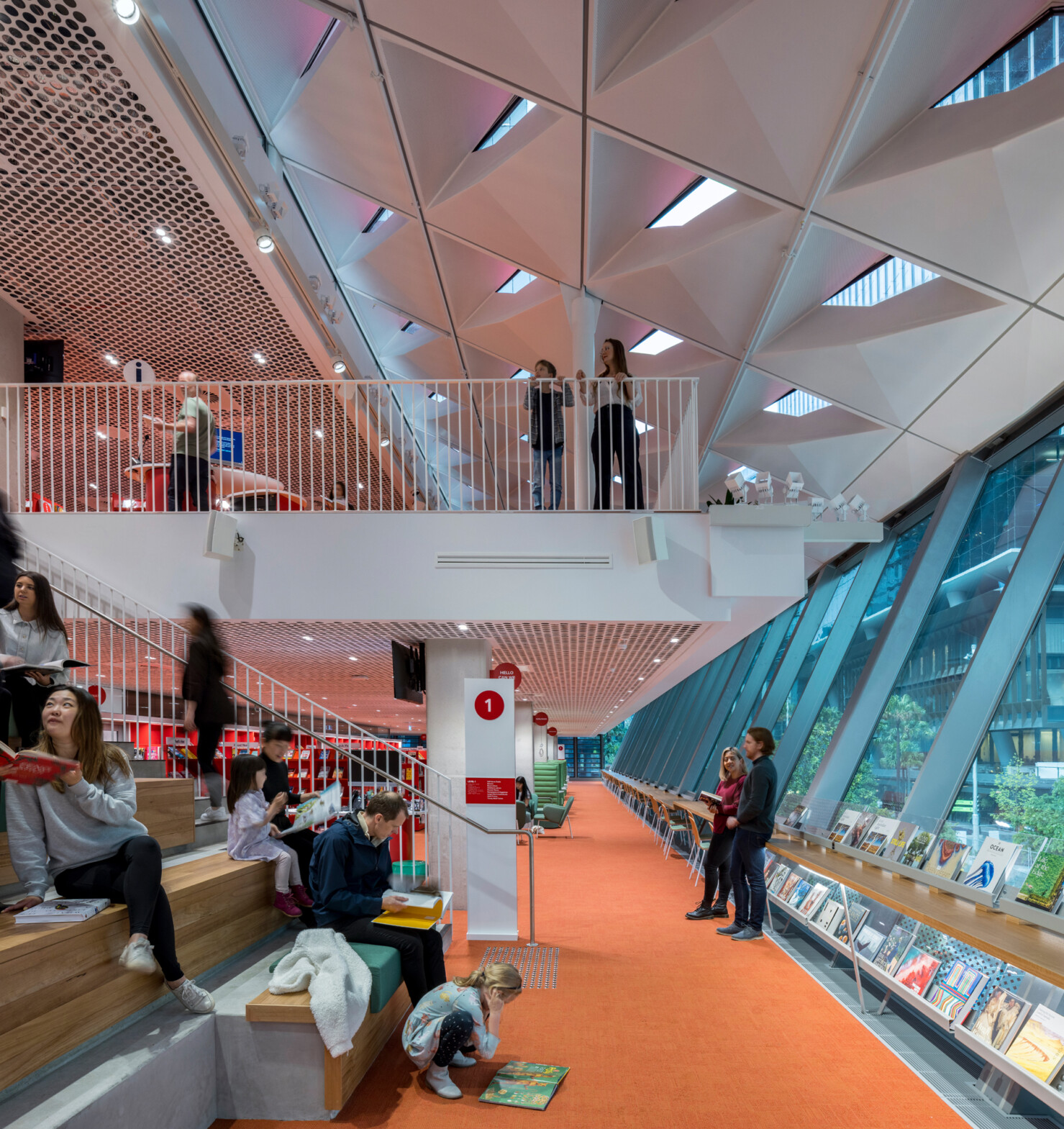
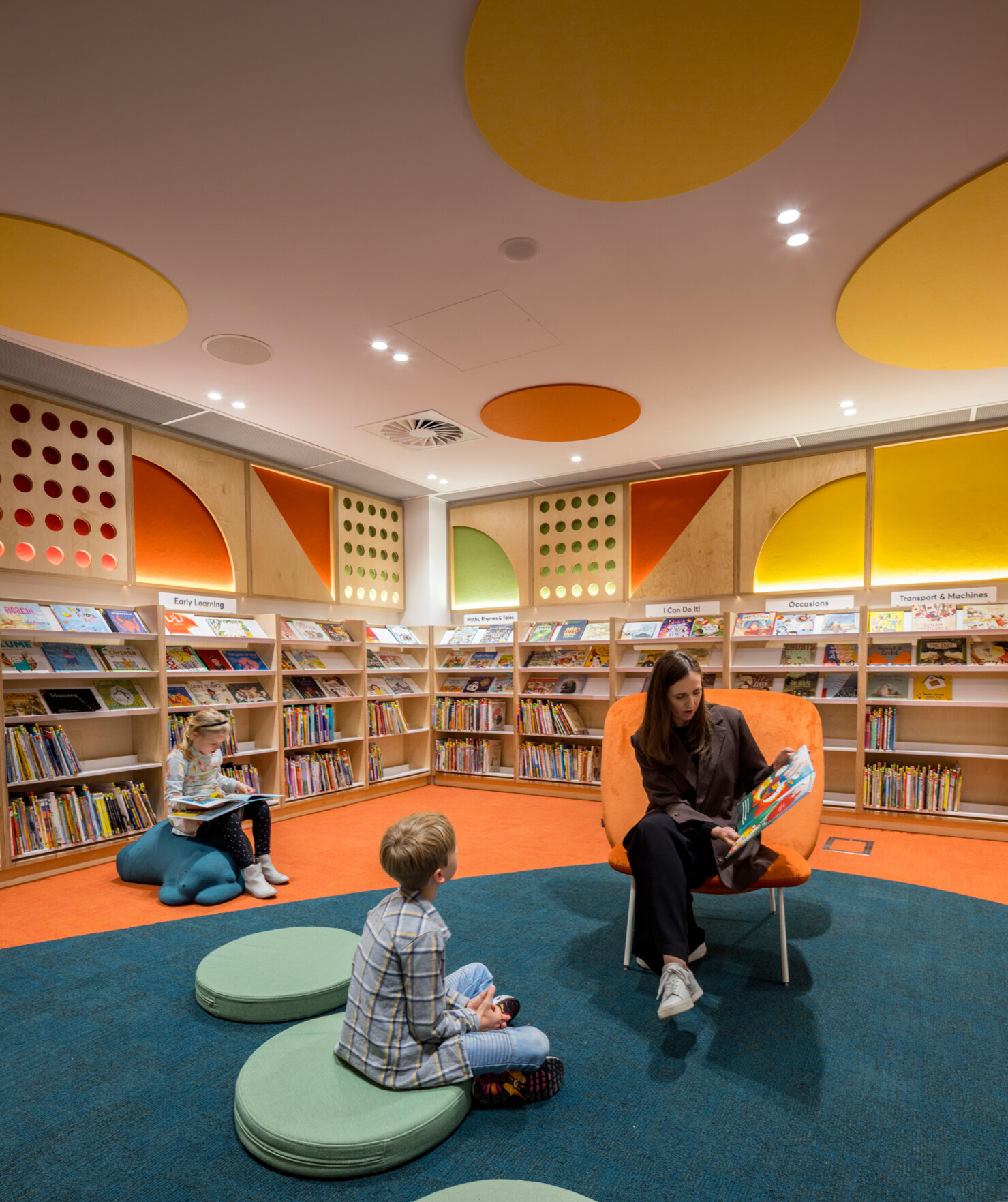
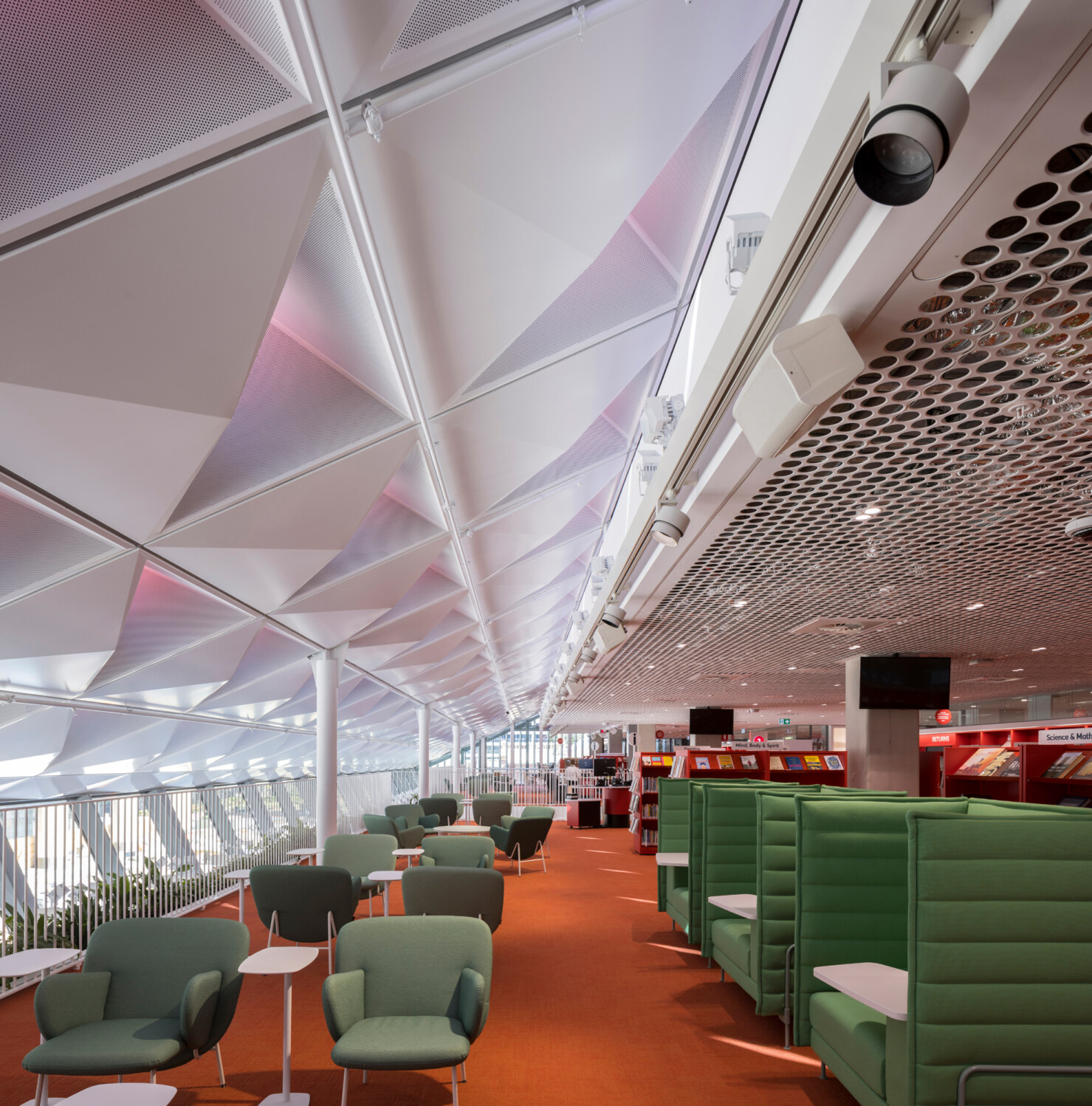
Level 3—Level three is completely dedicated to community where rooms that can be booked by the general public. These include a large active wellness centre with soft floor space which can be used for yoga and dancing; two acoustically insulated sound studios with recording equipment; two IT labs, each with around ten computers; and a makerspace, which has wet areas and can be used for a range of creative arts and crafts activities.
Level three is completely dedicated to community where rooms that can be booked by the general public. These include a large active wellness centre with soft floor space which can be used for yoga and dancing; two acoustically insulated sound studios with recording equipment; two IT labs, each with around ten computers; and a makerspace, which has wet areas and can be used for a range of creative arts and crafts activities.
Richard Does
Director, DesignInc Sydney
Level 4—Level four—the top floor—contains the Parramatta City Council Chambers, public seating gallery and associated facilities, and also cantilevers over the top of the old Town Hall. A grand lobby space opens onto generous outdoor roof terraces nestled into the striking red façade, providing a dramatic view across the red panelling and over Parramatta Square and the city skyline. Other spaces include a large boardroom (‘Dining Room’) where counsellors can have informal meetings and dine before Council meetings. As a visual and metaphorical gesture, the board room sits beneath the spire, with the internal space rising dramatically.
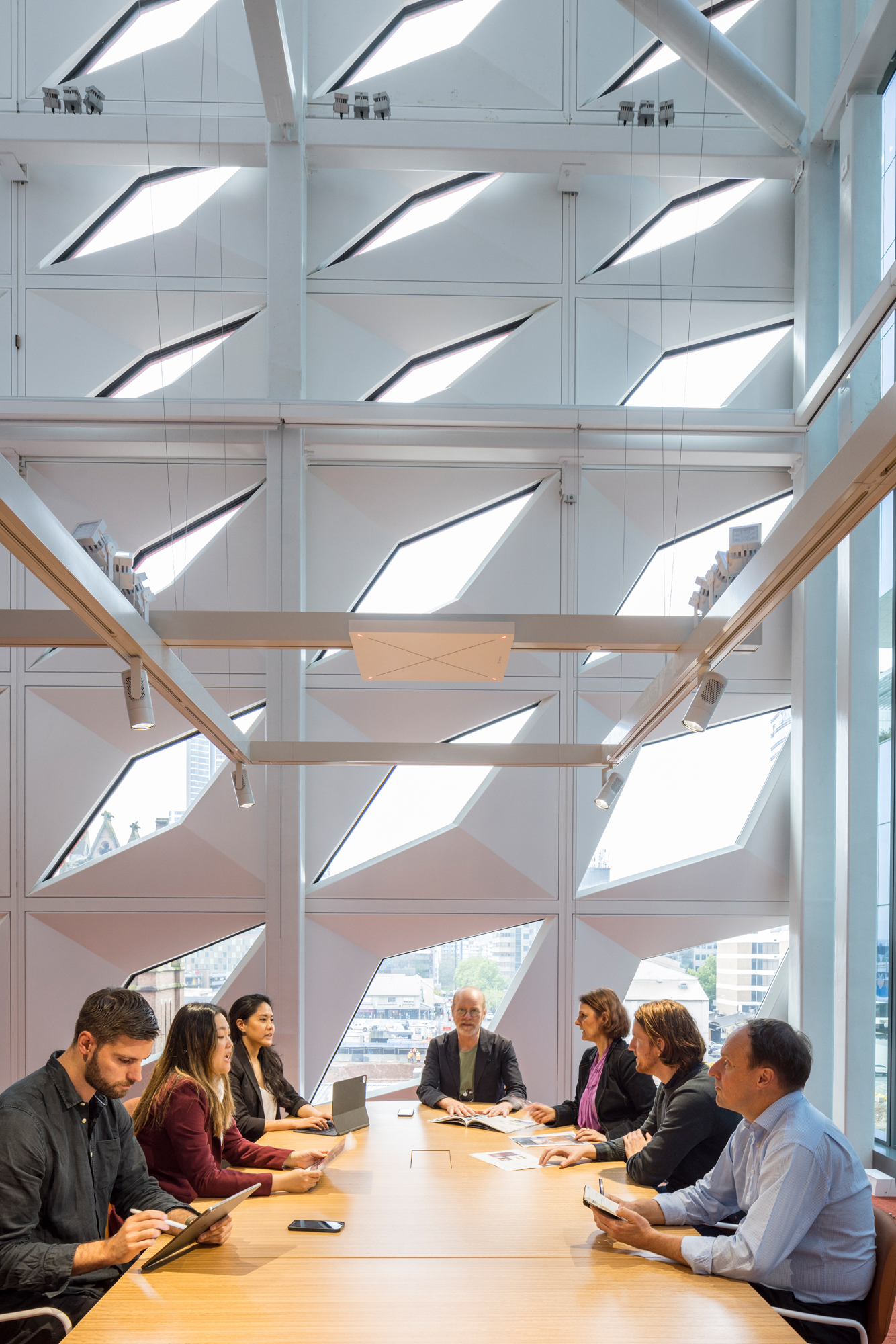
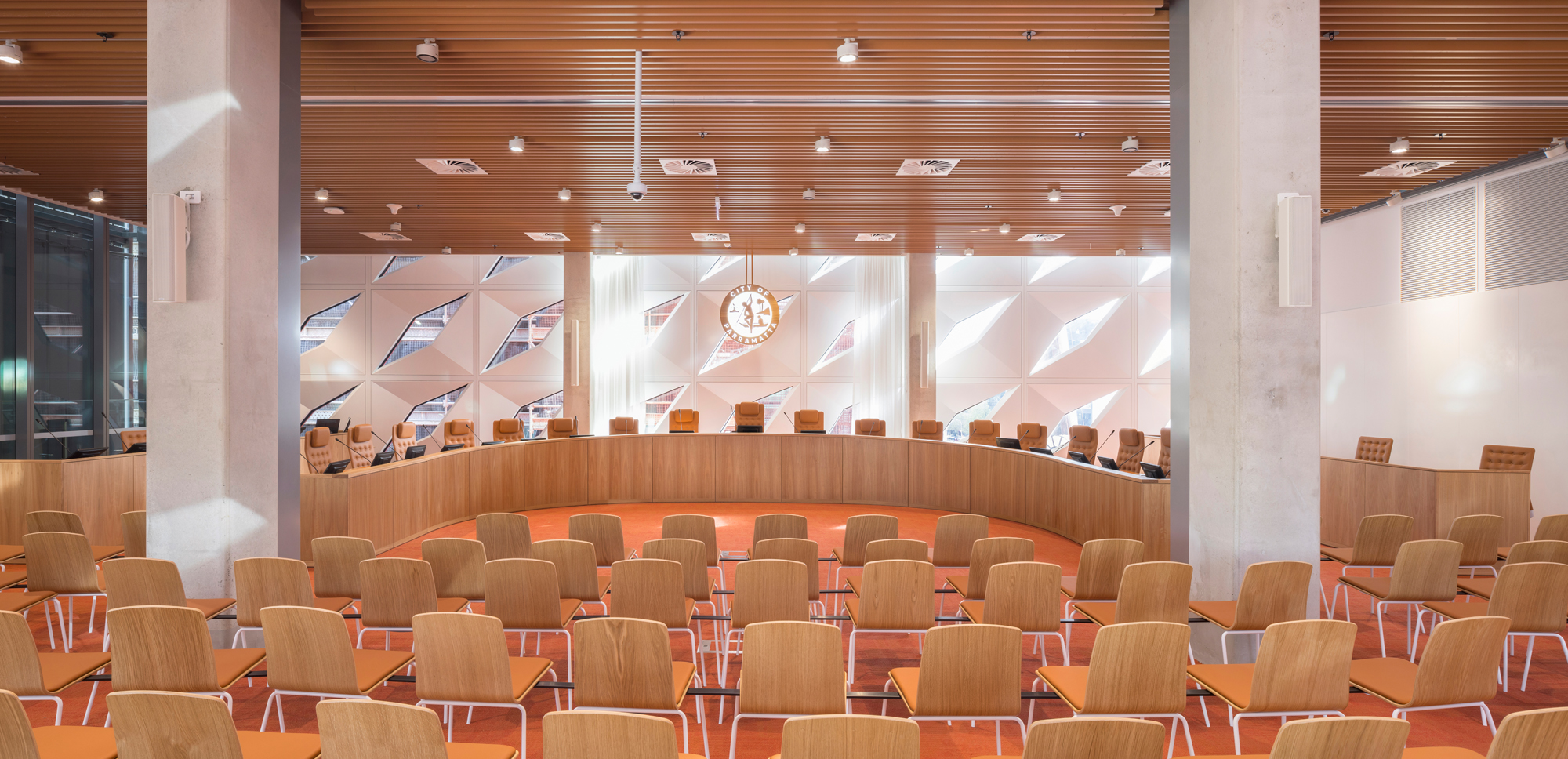
Thanks for that Richard, it’s great to get a sense of the different spaces in the building. What were some of the challenges with the project?
At competition stage the concept was a fully glass clad building, which we quickly realised was a challenge to meet 6 Star Green Star requirements. We used Rhino (a software package) to develop a custom panel system that is about 20% glass surrounded by insulated panel. The panels are self-shading, permitting very little direct sunlight to enter the building while still capturing views and ambient light. It’s a really clever solution that not only solves the light and energy challenge, but also allowed us to introduce colour into the façade in a way that a fully glass façade would not have allowed.
The southeast corner of the façade above the existing Town Hall is a historically significant site. Between 1814 and the 1830s, the Town Hall site was used for an annual ‘Aboriginal and European Meeting Day’ facilitated by Governor Macquarie. This turbulent history is reflected in the façade design above the Town Hall, where the texture of the façade panels is more irregularly oriented.
Another minor challenge was navigating the leadership and planning shifts along the way. There were changes to the planning rules as we were designing, so we had quite a few changes to the size and scale of the building—some people even called it ‘the accordion building’ as it got bigger then smaller then bigger then smaller. Once the brief was locked in, the design process settled down.
Colour seems central to the design. Can you tell me about that?
As the key public building in Parramatta Square, we wanted PHIVE to stand out as the heart of precinct. The surrounding commercial towers and the public square are cool in tone (grey, blue and green), so we used warm colours (red, orange, yellow and pink) to contrast. Manuelle and Thierry are both passionate about very bright colours. I contributed to the darker colour of the façade.
The colours are inspired endemic flora such as grevilleas, waratahs, bottlebrush and wattle. We think of it as ‘the flower in the square’. While there are only five colours, the light bouncing on the facets from different directions makes it look like there are many more. An illusion of height is created by the colours fading towards the top. A small dip in the slope of the roof gives a feeling of the building stretching into the sky.
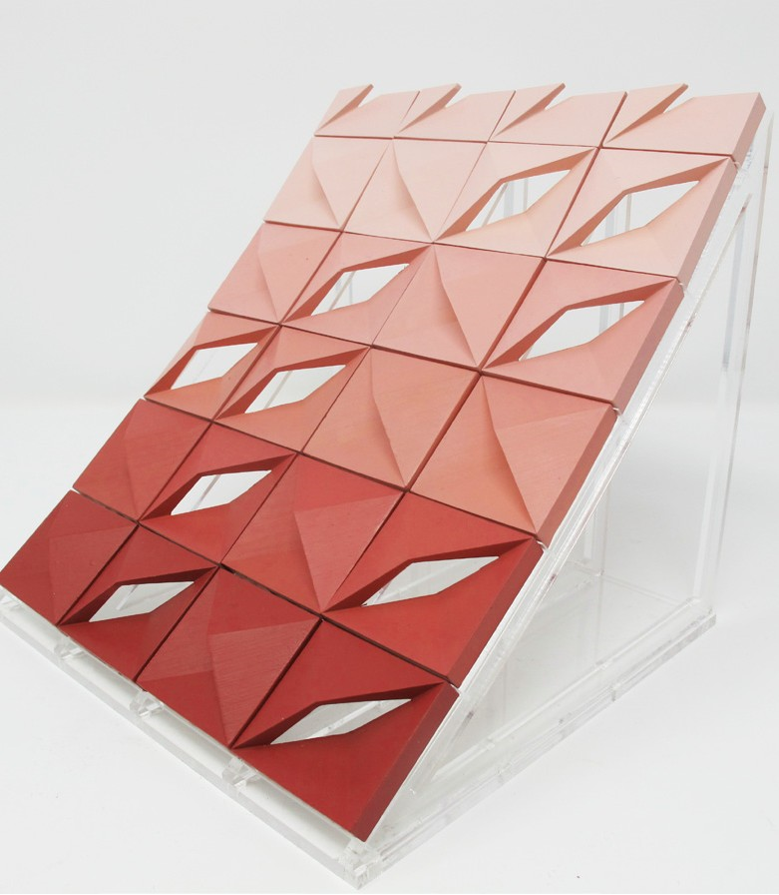
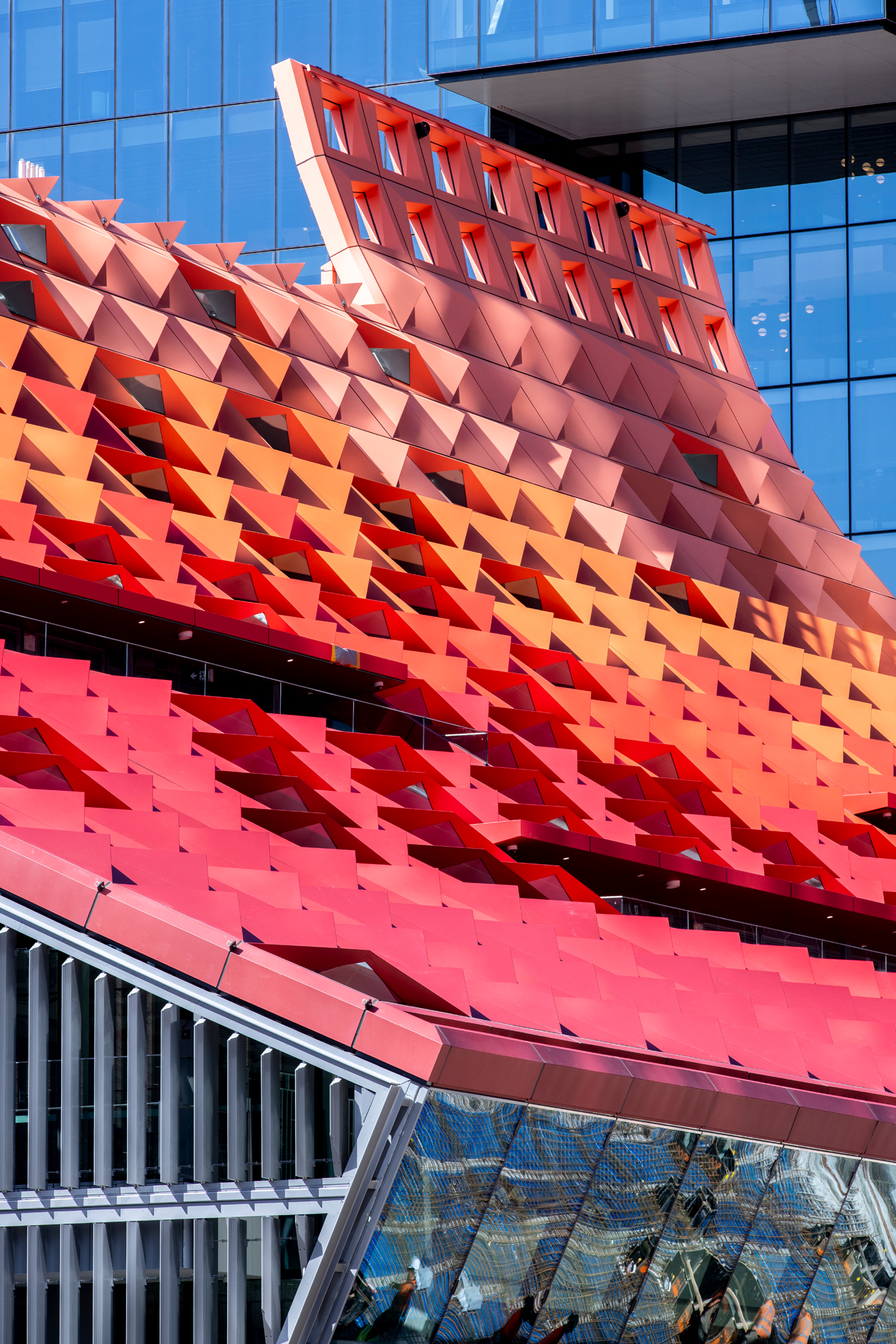
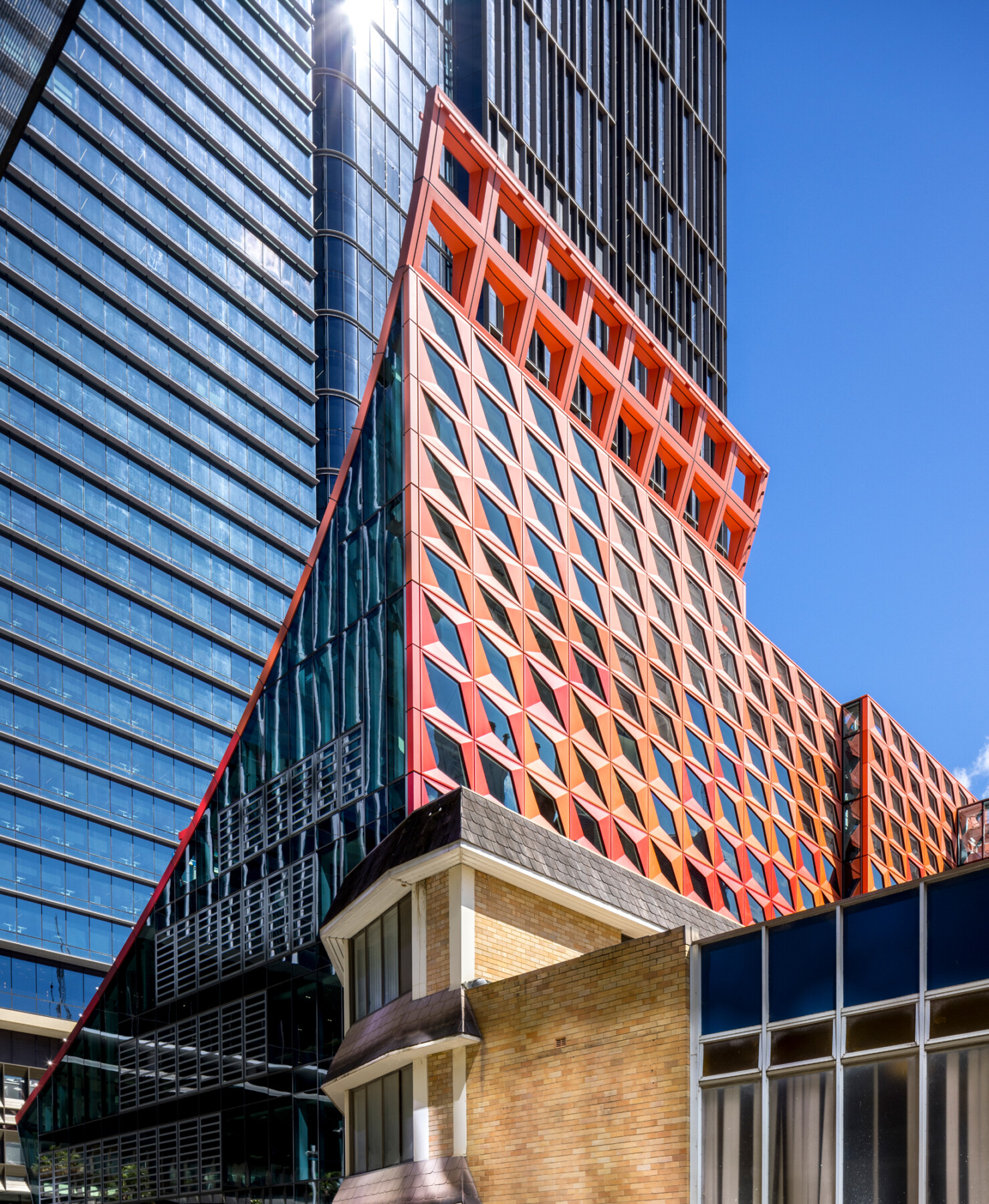
What are the sustainability considerations in the building?
The building is still in the process of collecting data for Green Star accreditation, and is on track to achieve a six star rating—an incredible achievement for a public building.
A passive ventilation system keeps the building comfortable for most of the year without relying solely on air conditioning. Two chimneys draw air up via convection through the building, with cool air drawing through from the lower levels during summer. Glass louvres on each floor controlling airflow are connected to the building maintenance system that draws temperature, rainfall and wind data from a number of local Bureau of Meteorology sites. The maintenance system calibrates the data and controls the louvres to optimise air flow into to the building from particular directions depending on the weather. Occasionally—such as in the depths of winter or the height of summer—the louvres are all closed and the air conditioning system is turned on. All windows and doors are fully sealed with on thermal bridging, allowing energy optimisation when the air conditioning is in use.
In addition, Parramatta City Council operates PHIVE as a carbon neutral building.
Glass louvres on each floor controlling airflow are connected to the building maintenance system that draws temperature, rainfall and wind data from a number of local Bureau of Meteorology sites. The maintenance system calibrates the data and controls the louvres to optimise air flow into to the building from particular directions depending on the weather.
Richard Does
Director, DesignInc Sydney
What are you most proud of in the whole process of designing and delivering PHIVE?
Redesigning the façade was quite an achievement. Considering it was a substantial deviation from the initial concept, we were pleased to have the overwhelming support of the design team and Council.
Thank you Richard. Indeed, this beautiful building is quite an achievement.
